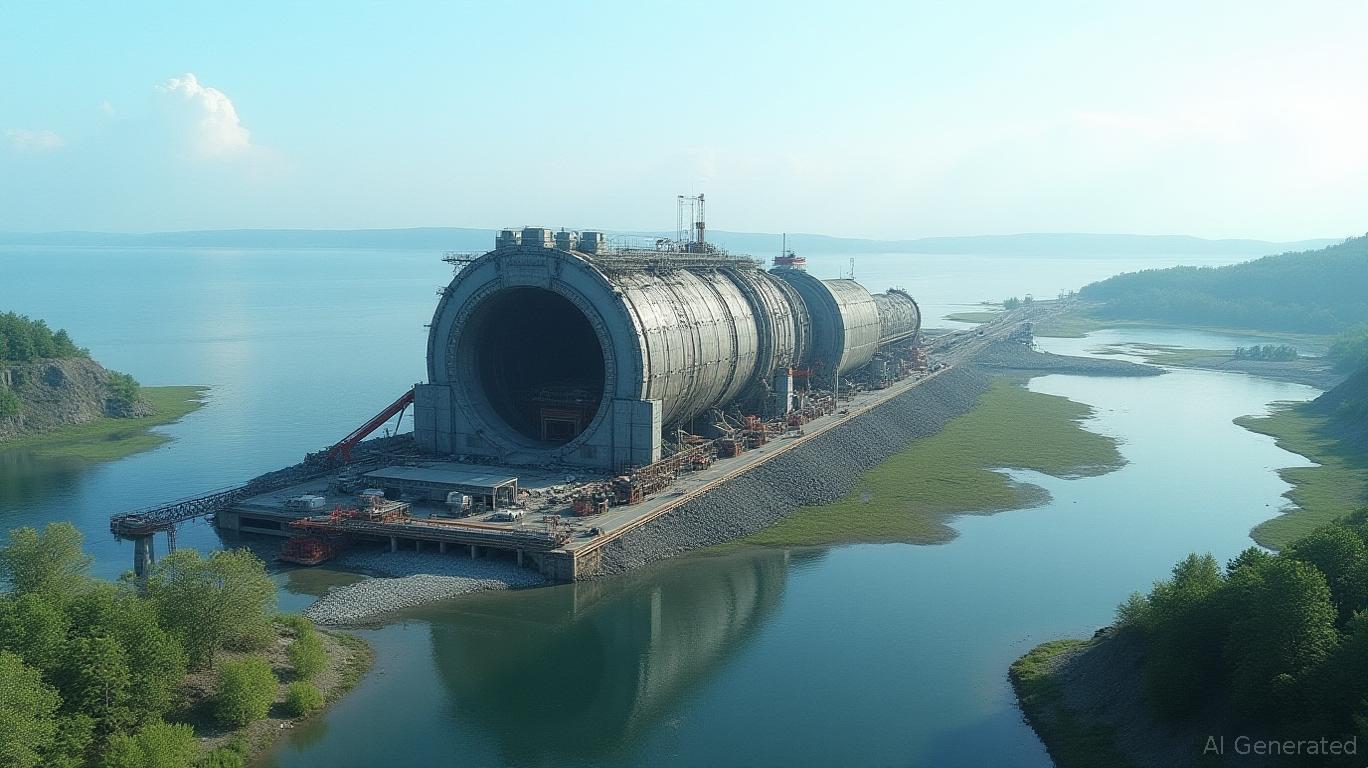Enbridge Line 5 Tunnel Project: Navigating Environmental Risks and Regulatory Realities for Strategic Energy Investments
The
Line 5 tunnel project, a cornerstone of the Great Lakes region's energy infrastructure, stands at a pivotal juncture. As of May 2025, the U.S. Army Corps of Engineers (USACE) has released a draft environmental impact statement (DEIS), igniting a 30-day public comment period that could seal its fate. For investors, this milestone is more than a bureaucratic step—it's a critical lens through which to assess the project's viability amid escalating environmental scrutiny and regulatory uncertainty.
Environmental Risks: A Double-Edged Sword for Investors
The DEIS paints a complex picture. While the tunnel aims to reduce spill risks from the aging pipeline's current exposed position, its construction threatens habitat loss, water contamination, and cultural preservation. Key risks include:
- Ecosystem Vulnerability: The 3.6-mile tunnel could disrupt wetlands, forests, and aquatic habitats, including the critical spawning grounds of lake sturgeon—a species protected under tribal treaty rights. The DEIS estimates eight acres of protected habitat loss, with mitigation measures still under debate.
- Climate Accountability: Critics argue the project perpetuates fossil fuel dependency at a time when renewables dominate global energy transitions. The DEIS sidesteps long-term climate impacts, a red flag for ESG-conscious investors.
- Construction Spills: Drilling fluid releases and sedimentation during tunneling pose immediate risks to water quality, despite Enbridge's proposed safeguards.
Yet, these risks are not insurmountable. The DEIS concludes the tunnel offers a “safer alternative” to the current pipeline, which has leaked over 1 million gallons of oil since 1969. For investors, the calculus hinges on whether mitigation measures—such as Enbridge's $5.2 billion price tag and advanced TBM technology—can offset environmental liabilities.
Regulatory Hurdles: A Race Against Time and Politics
The project's approval timeline is fraught with political and legal volatility. While Michigan has already issued key permits, the federal review faces two major obstacles:
- Tribal Treaty Rights: The Corps deferred final judgment on whether the tunnel violates treaty rights of the Bay Mills Indian Community and other tribes. A ruling against Enbridge could trigger costly delays or re-routes.
- Legal Battles: Michigan's Attorney General seeks to decommission Line 5 entirely, citing state authority disputes. Meanwhile, the Biden administration's emergency energy directive has expedited federal reviews—a double-edged sword that could accelerate permits but also invite lawsuits.
The USACE aims to finalize permits by fall 2025, but history suggests delays are likely. Investors should monitor the public comment period's outcomes, particularly submissions from environmental coalitions and tribal groups.
Why This Matters for Energy Investors Now
The Line 5 tunnel is a microcosm of the broader energy sector's existential dilemma: balancing infrastructure modernization with environmental stewardship. For investors, the stakes are clear:
- Upside Potential: If approved, the tunnel secures a critical oil and gas artery for the Midwest, ensuring stable energy prices and jobs—key for Enbridge's cash flows. The project's $5.2 billion price tag also signals long-term operational reliability, reducing spill-related liabilities.
- Downside Risk: Rejection or prolonged delays could force Enbridge to shut down Line 5, disrupting propane supplies for 1 million Michigan households and threatening regional energy prices.
The DEIS's conclusion—that decommissioning Line 5 is “economically infeasible” due to market demand—hints at regulatory favorability. Pair this with Enbridge's advanced preparation (e.g., a TBM ready for 2026 construction) and it becomes a compelling “buy the dip” opportunity.
Act Now: The Clock is Ticking
The window to position for this outcome is narrowing. Investors should:
1. Buy Enbridge (ENB): Despite recent volatility, ENB's stock has historically rebounded on regulatory clarity. A fall 2025 permit approval could catalyze a 15-20% upside.
2. Hedge with Energy ETFs: Use the XLE to capture broader sector momentum while mitigating pipeline-specific risks.
3. Monitor Legal Milestones: Track tribal consultations and Michigan's legal challenges. A resolution in Enbridge's favor could trigger a buying frenzy.
Final Analysis: A Risk-Adjusted Win
The Enbridge Line 5 tunnel is not a risk-free bet, but for investors willing to navigate regulatory and environmental headwinds, it offers asymmetric upside. With permits on track and Enbridge's financial might backing the project, the rewards of energy reliability and reduced liability outweigh the near-term uncertainties.
The Straits of Mackinac's fate is now tied to the U.S. Army Corps of Engineers' pen. For those who bet on the tunnel's approval, this could be the next chapter in Enbridge's legacy—or the start of a costly detour. The time to decide is now.
Investment decisions should be made in consultation with a financial advisor. Past performance does not guarantee future results.

Comments
No comments yet